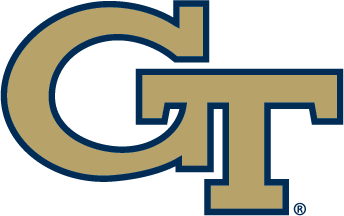Aug. 17, 2010
By Matt Winkeljohn
Sting Daily
There is nothing in Al Groh’s job description about debunking myths, but it will be part of his job.
Every new head coach or coordinator has skeptics to deal with in a new job. In Groh’s case, some question whether his system – the 3-4 defense – is any more effective than alternatives.
That’s only the most obvious bunk against him and his system.
There are nuances aplenty, and they may surface incrementally over the course of the season depending upon the success not only of the Yellow Jackets’ defense, but the team as a whole.
Today, we look at the suggestion the 3-4 has to have a huge nose tackle, and, for that matter, over-sized defensive linemen. If that’s the case, the Jackets will be paddling up stream.
Their biggest defensive lineman, T.J. Barnes (6-feet-7, 335 pounds) is in the mix at nose tackle and end, and figures to play. The sophomore is not likely to start.
Logan Walls (6-2, 295) is likely to win the nod there, and senior Ben Anderson (6-2, 272) is a candidate. Tech will not be over large at the ends, either, as starting candidates Jason Peters (who played some at nose tackle in Saturday’s scrimmage in Bobby Dodd Stadium) is 6-4, 271. Fellow end Izaan Cross goes 6-4, 292.
So, Coach, would you like more size up front?
Announcer: There, the myth is on the tee for Al Groh; here’s his swing, and there goes a de-bunk:
“The misconception . . . lets put it this way, there’s no defense that I know of that would prefer to be smaller than bigger,” he said. “Call it whatever you want: 1-6, 4-3, 4-4, every coach would like to be bigger. You try to recruit bigger. Then, you try to get them stronger.
“What’s really necessary to play defense is lateral quickness and balance, which comes from flexibility, fast hands, and the ability to play with leverage. Big players who can’t bend don’t get full advantage of their size.”
Lest you mis-interpret that as a non-answer, bear in mind that Groh has turned this defense over in his mind so many times, over so many years, that he’s boiled it down to overly analytical nuggets.
Here’s the real answer, not prompted by another question, but triggered by a pause in conversation that Groh opted to leap through.
Beyond the difference in the way the Jackets will look when lined up in their base defense relative to previous seasons in a 4-3, there is the fact that up front Tech will usually be playing a two-gap system.
Asked to simplify the difference between two- and one-gap play up front, Anderson said, “Our tackles [in the past] would be shaded, or in gaps [between the center and a guard, or between a guard and a tackle]. Now, you’re head up on your man and responsible for both gaps.”
Naturally, when you’re assigned to plug the gaps to both your left and right, which is to say you’d better drop anchor there in the event a ball carrier comes through, it’d be easy to suggest that more weight, size, strength, etc. would help.
It will not be essential, however, in part because there will be plenty of occasions where Tech’s defensive linemen are not sitting ducks, when their gaps will not be so easily assigned as one right and one left.
“We do a lot of moving, looping, and twists,” Anderson said. “I wasn’t expecting that. I was expecting the nose guard to get doubled on every play, but we do a lot of things to stay out of that.”
Ask Groh about the two-gap business, and his answer does a better job of addressing the importance of size up front. It’s also a step toward de-bunking the suggestion that Tech won’t have enough size up front to execute the defense to its design.
“For example, the most effective two-gapper that we ever had in college football was Chris Long,” Groh said. “Every defensive lineman that we have [at Tech] weighs more than what Chris Long did. He had great leverage, very explosive, terrific lateral quickness and balance; all of those things that maximize athletic ability.”
Long, the son of Pro Football Hall of Famer Howie Long, was all-everything at Virginia from 2004-`07, playing mostly end.
He was the No. 2 overall pick of the Rams in the 2008 NFL draft, and although his playing weight was at times listed well into the 280-plus range with the Cavaliers, he weighed 271 pounds at the NFL scouting combined, and even now, he’s of modest size at 6-3, 276. He may have weighed less than 270 at times at Virginia.
Conclusion: take talent over a tank. Success is derived more from a player’s genes rather than the size of his jeans.
One myth down.
Matt Winkeljohn hopes that somebody can approximate Chris Long for Tech; that would be great. Send your thoughts, suggestions or recipes to stingdaily@gmail.com.









